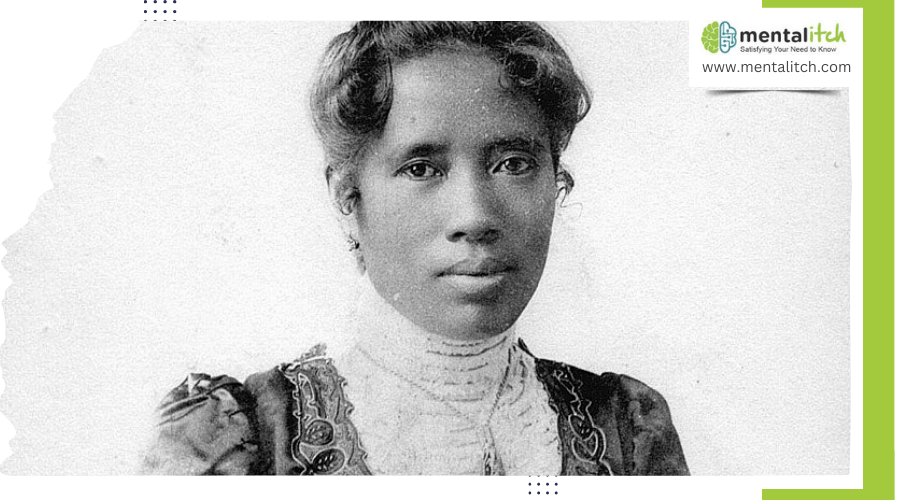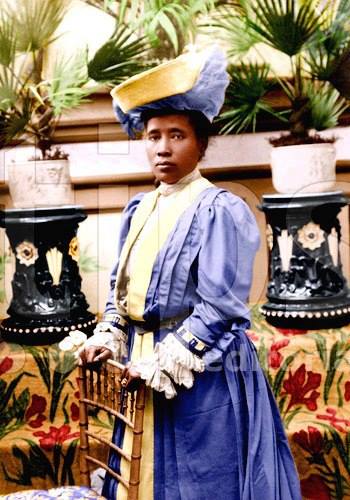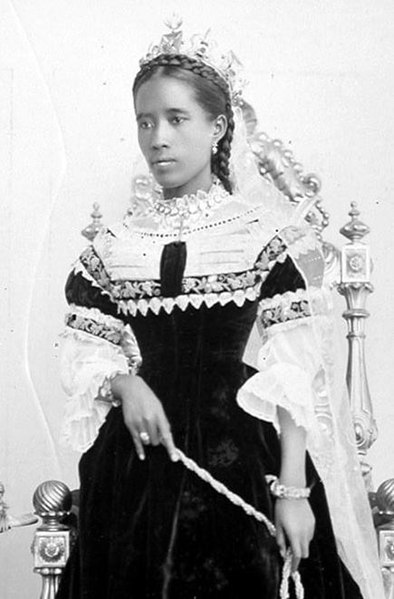Did you know that during Ranavalona I’s reign, the population of Madagascar is estimated to have nearly halved? You might find yourself wondering how she came to be known as Madagascar’s Mad Queen. Ascending to power in 1828, her rule was marked by a fierce dedication to preserving the Merina dynasty’s independence from Western influence, which led to some of the most controversial policies of her time.
From the implementation of harsh laws to the suppression of Christianity, her methods were unorthodox and often brutal. But there’s more to her story that might change how you view her legacy. Let’s explore the complexities behind her infamous title.
Ascension to Power
In 1828, Ranavalona I seized the throne of Madagascar, eliminating her rivals to begin her reign. Her ascension to power wasn’t a tale of mere proof; it was a declaration of her resolve to wield absolute control over the island. After the death of her husband, King Radama I, you might think Madagascar’s leadership would pass peacefully. However, Ranavalona had other plans. She didn’t just step into power; she clawed her way to the top, declaring herself the rightful ruler amidst opposition from Prince Rakotobe and others who also eyed the throne.
To secure her position, Ranavalona I employed brutal methods, ensuring potential threats were eliminated without spilling royal blood—a strategy both clever and cruel. Her ruthless tactics weren’t just about maintaining order; they were about sending a clear message: she was the undisputed queen of Madagascar. This marked the beginning of a controversial and authoritarian reign, earning her the moniker ‘Mad Queen.’ Her reign wasn’t just a chapter in Madagascar’s history; it was a narrative of power, fear, and the lengths one would go to remain the absolute ruler.
Isolation Policies
Ranavalona I’s reign took a dramatic turn as she implemented strict isolation policies, severing Madagascar’s ties with European influences to safeguard her kingdom’s culture and independence. You’ll find that her approach not only aimed to repel foreign powers but also to reinforce traditional practices, ensuring Malagasy culture remained untainted by outsiders.
| Aspect | Impact |
|---|---|
| Forced Labor | Utilized for public works and military, leading to a high mortality rate. |
| Preservation of Culture | Traditional practices were enforced to maintain Malagasy culture. |
| Isolation Policies | Cut off from European influences, aiming for self-sufficiency. |
| Resistance to Foreign Powers | Successfully repelled a French attack on Foulpointe. |
| Controversial Reputation | Policies contributed to her being known as Madagascar’s Mad Queen. |
These policies, while aiming to protect the kingdom, came with a steep cost. The use of forced labor for public works and military purposes significantly contributed to a high mortality rate among her people. It’s this aspect, among others, that contributed to Ranavalona I’s controversial reputation as Madagascar’s Mad Queen. Her efforts to maintain sovereignty and preserve Malagasy culture, albeit through harsh measures, paint a complex picture of a ruler determined to resist European domination at all costs.
Suppression of Christianity
Determined to preserve her kingdom’s cultural identity, Ranavalona I fiercely clamped down on Christianity, viewing it as a direct threat to traditional Merina beliefs. She saw the spread of Christianity not merely as a religious shift but as an encroachment of foreign influences that could undermine her authority and the established way of life. To counter this, she expelled European missionaries and ramped up the persecution of Malagasy Christians. Her efforts were not just about affirming sovereignty; they were deeply rooted in a desire to maintain the purity of traditional beliefs against what she perceived as a corrosive external force.
Ranavalona I didn’t stop at expulsion and social ostracization; she reinstated the tanguena ordeal, a deadly test used to root out and punish those who had converted to Christianity. This brutal method, alongside other anti-Christian policies, led to a significant population loss, painting her as a ruthless ruler unfazed by the prospect of sacrificing her subjects to protect the kingdom from the perceived decay brought by Christianity. Her legacy, marked by this fierce suppression, underscores a reign characterized by a relentless fight against foreign influences to preserve traditional beliefs, cementing her reputation as Madagascar’s Mad Queen.
Implementation of Harsh Laws
Building on her efforts to preserve the kingdom’s cultural identity, Ranavalona I also enforced harsh laws that illustrated her iron-fisted rule. The introduction of these severe measures was a proof of her determination to maintain power at any cost, employing brutal and tyrannical methods to suppress dissent. Here’s how she did it:
- Tangena Ordeal: A poison-based trial by ordeal, the tangena ordeal was a horrifying method to root out those suspected of disloyalty. Ingesting a lethal poison, survival meant innocence, while death confirmed guilt, leading to a high mortality rate among the accused.
- Forced Labor: Ranavalona’s reign saw the widespread implementation of forced labor. Her subjects were compelled to work on public works and in the military, contributing notably to the high mortality rate due to harsh working conditions and lack of care.
- Brutal Legal Practices: Those suspected of opposing Ranavalona faced harsh punishments, including torture and execution. These brutal practices instilled fear across the kingdom, ensuring control through terror.
- Violent Means of Dissent Suppression: The suppression of dissent was achieved through violent means, solidifying Ranavalona’s reputation as a ruthless ruler. Her tyrannical approach left a mark on Madagascar, remembered for its cruelty and the suffering it inflicted upon her people.
Resistance to Colonialism
Despite facing overwhelming odds, Madagascar’s defense against colonial powers often hinged on the fierce strategies deployed by its queen. You’ve heard tales of Ranavalona I, often dubbed Madagascar’s Mad Queen, but there’s more to her story than mere madness. Her reign was marked by a relentless resistance to colonialism, a proof of her determination to preserve Madagascar’s independence.
Ranavalona I wasn’t just opposing European powers; she was actively fighting against the tide of colonialism that threatened to engulf her island. By canceling trade agreements with Western nations and repelling a French invasion, she showcased her anti-colonial stance in no uncertain terms. But her resistance went beyond mere military tactics. The queen’s harsh policies towards European missionaries and Christian converts were part of a broader strategy to maintain Malagasy sovereignty. Her efforts to keep foreign influences at bay might have been brutal, but they were effective. Through strategic alliances and these brutal tactics, Ranavalona I made sure that Madagascar remained out of direct European control.
Her reign may have been controversial, but Ranavalona I’s staunch defense against colonial encroachment solidified her legacy as a formidable protector of Madagascar’s independence.
Cultural Preservation Efforts
Madagascar’s efforts to safeguard its rich cultural tapestry involve initiatives that champion the island’s indigenous languages, historical landmarks, and traditional arts. By focusing on these areas, Madagascar aims to preserve its unique heritage and guarantee it’s passed down to future generations.
Key components of cultural preservation in Madagascar include:
- Promotion of Indigenous Languages: Efforts are made to revitalize and teach indigenous languages to the youth, ensuring the survival of these crucial aspects of Malagasy identity.
- Protection of Historical Sites: By safeguarding historical and sacred sites, Madagascar protects its physical link to the past, allowing for continued reverence and understanding of traditional practices.
- Revitalization of Traditional Arts and Crafts: Initiatives to revive and promote traditional arts, crafts, and ceremonies not only keep artistic traditions alive but also foster community cohesion.
- Documentation of Oral Histories: Recording the oral histories and wisdom of elders guarantees that the deep-rooted values and stories of Madagascar are not lost but instead celebrated and remembered.
Through these efforts, Madagascar actively works toward a future where its cultural heritage is not just a memory but a living, breathing part of daily life, strengthening the bond between its people and their rich history.
Allegations of Brutality
While efforts to preserve Madagascar’s cultural heritage are commendable, it’s necessary to also examine the darker aspects of its history, particularly the brutal reign of Ranavalona I. Her rule is marked by allegations of extreme brutality that have shaped her legacy. One of the most notorious methods she used to enforce loyalty was the tangena ordeal, a cruel test that caused countless deaths. You might find it shocking how these loyalty tests, aimed at identifying and punishing suspected Christians, reflect the lengths she went to maintain power.
Ranavalona I’s harsh policies weren’t just about maintaining control; they also led to a catastrophic population loss in Madagascar. Her fierce opposition to European influence and Christianity played a significant role in driving missionaries out of the country. This stance, while aimed at preserving sovereignty, resulted in isolation and severe human cost.
Her reputation as “The World’s Most Murderous Woman” isn’t unfounded. It stemmed from the thousands who perished under her rule, victims of her extreme measures to root out dissent and foreign influence. This part of Madagascar’s history is a stark reminder of the consequences of unchecked power and brutality.
Economic and Social Impact
Ranavalona I’s reign profoundly undermined Madagascar’s economy and deepened social rifts through her severe policies and isolationist approach. Her tenure was marked by measures that not only curtailed economic progress but also fostered substantial social unrest. Let’s break down how her governance impacted Madagascar:
- Forced Labor and Population Decline: The queen’s reliance on forced labor for public works and military efforts led to a sharp population decline. This was due not just to the harsh conditions of the labor itself but also to the social unrest it spurred among her people.
- Economic and Technological Stagnation: Her isolationist stance hindered economic growth. By cutting off external trade and relying solely on internal resources, Ranavalona ensured that Madagascar remained disconnected from technological advancements and global economic developments.
- Agricultural Decline: The prioritization of military efforts over agricultural production, coupled with harsh labor policies, severely impacted the nation’s ability to sustain itself, exacerbating the already dire situation.
- Widening Social Inequalities: The queen’s brutal policies and strict control over resources deepened social inequalities, fueling discontent among the population. Her approach exacerbated the divide between different societal groups, leaving lasting scars on the nation’s social fabric.
Ranavalona I’s strategies not only stifled Madagascar’s potential for economic growth but also sowed deep-seated divisions and discontent among her subjects.
Legacy and Controversy
Reflecting on the profound impacts of Ranavalona I’s reign, it’s essential to explore the complex legacy and controversy that surround her historical figure. Her determination to resist European influence and Christianity marked her era, casting her as a defender of Malagasy sovereignty. However, her methods, including the reintroduction of a form of slavery and the persecution of Christian converts, have painted her reign in shades of tyranny. The catastrophic population loss under her rule, earning her the nickname ‘The World’s Most Murderous Woman,’ further complicates her legacy.
You can’t ignore the controversy that envelops Ranavalona’s legacy. To some, she’s seen as a cruel monarch, whose monstrous actions led to thousands perishing and suffering under her command. Yet, to others, she’s viewed as a heroic figure, valiantly upholding traditional Malagasy values against foreign encroachment. This duality sparks ongoing debates about her reign, with opinions sharply divided between those who condemn her actions as barbaric and those who praise her resistance to colonial pressures.
In navigating Ranavalona I’s legacy, you’re confronted with a narrative that oscillates between condemnation and admiration, reflecting the complex interplay of history, culture, and perspective. Her story serves as a potent reminder of the enduring impact of leadership and the divisive nature of legacy and controversy.
Conclusion
You’ve just explored into the complex reign of Ranavalona I, Madagascar’s ‘Mad Queen.’ Her ascent to power marked a period of intense isolationism and brutal suppression, strikingly against Christians and perceived opponents. Despite her harsh tactics, she fiercely resisted colonial advances, preserving Madagascar’s independence and traditional culture. Allegations of brutality under her rule have sparked debate, but her legacy is undeniable—balancing controversy with her role in safeguarding her nation’s sovereignty and cultural identity against all odds.



